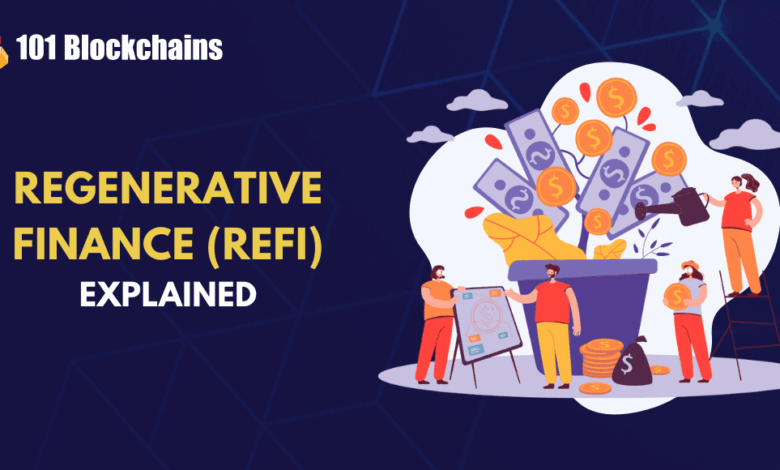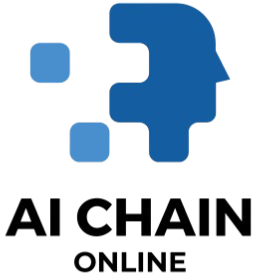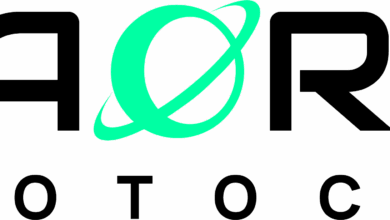What Is Regenerative Finance (ReFi)?

In this evolving world of Web3, an innovative financial paradigm is emerging. It is not just helping to minimize harm to society and the environment, but also actively healing them. Well, we are talking about regenerative finance, ReFi. ReFi is a movement that has merged blockchain technology with social equity, sustainability, and ecological restoration. In fact, it has become an inclusive, accessible, and transparent alternative to our conventional financial systems.
If you are wondering, “What is regenerative finance?” or “how it helps society and the environment?”, this detailed blog will give you the answers. This blog covers the comprehensive landscape of regenerative finance, including ReFi’s trends, future opportunities, and goals in this changing finance industry.
ReFi – A Quick Introduction
In simple words, regenerative finance is a blockchain-powered financial model that is designed to regenerate and restore environmental, economic, and social systems. It creates financial solutions that are sustainable, regenerative, and equitable. In other words, ReFi is a Web3-powered social and ecological impact. ReFi is built on the principle of:
- Decentralized governance
- Regeneration over extraction
- Traceability and transparency
- Holistic wealth metrics
Master Web 3.0 with the Certified Web 3.0 Professional (CW3P)™ program—uncover its core concepts, real-world use cases, and the risks and rewards of this next-gen tech.
Primary Goals of Regenerative Finance ReFi
ReFi has started reshaping how people think about sustainability, money, and impact. Its primary purpose is to create a financial system that can help restore ecosystems, promote long-term value, and empower the economy. Here are some major goals of ReFi.
-
Environmental Restoration
ReFi crypto projects primarily focus on practices that can help the environment. For example, the use of renewable energy, reforestation, biodiversity protection, and pollution reduction. Aligning various financial initiatives with ecological outcomes helps restore nature.
ReFi prioritizes fairness. It supports initiatives that are designed to improve access to economic opportunities, healthcare, and education, especially among people in need in underserved communities. By empowering such groups and redistributing resources, ReFi promotes an inclusive ecosystem.
ReFi leverages the power of DeFi or Decentralized Finance. With the help of blockchain technology it makes it easier and affordable for individuals to invest in green projects without any middlemen.
-
Sustainable and Long-Term Growth
Traditional finance only focuses on short-term gains or quick profits. However, ReFi is created for sustainable, long-lasting growth. It is designed for ventures and businesses that always value community resilience, the environment, and social responsibility. The goal is to promote growth that can benefit both the planet and people.
Utilizing blockchain technology, Regenerative Finance ReFi ensures that all the transactions are immutable, verifiable, and visible. This builds trust and offers a clear report showing the usage of funds. Whether it is community grants or carbon credits, ReFi is making financial impact accountable and traceable.
-
Empowering Local Communities
ReFi is created to bring power back into the hands of communities. By funding local projects like sustainable farming, decentralized infrastructure, and solar energy, ReFi helps communities shape their futures.
Want to explore in-depth about DeFi protocol and its use cases? Enroll Now in Decentralized Finance (Defi) Course- Intermediate Level !
How Do ReFi Projects Work?
Regenerative finance funds initiatives, projects, and activities that focus on regenerative and sustainable forms of development. It ensures a long-term vision as well as community empowerment while making profits.
Furthermore, it follows the circular economy principles. The circular economy is a production model that emphasizes eliminating waste and pollution by regenerating products. Products are recycled, repaired, refurbished, and reused to reduce wastage.
The Elements of Web3 Contributing to ReFi
Web3 is a limiting factor as well as an enabler for ReFi. There are four major elements that are contributing to the growth and adoption of ReFi. These are:
- Smart Contracts: These contracts can automate multiple processes, such as verifying a company’s impact on the environment, releasing funds after completion of milestones, etc. Besides, it makes tracking project progress transparent.
- Tokenization: ReFi projects involve tokens representing ecological outcomes or real-world assets. For instance, biodiversity credits, carbon credits, etc. One can trade these tokens on available decentralized exchanges.
- DeFi: ReFi projects are generally integrated with the protocols of decentralized finance. This enables the availability of additional financial services such as borrowing, yield farming, or lending. These things also create more sustainable investment opportunities.
- DAOs: In ReFi, Decentralized Autonomous Organizations play an important role by managing funds and allocating resources. Besides, they ensure that communities are actively participating in ReFi projects.
Want to understand the best ways to use DeFi development tools like Solidity, React, and Hardhat? Enroll now in the DeFi Development Course!
Major ReFi Crypto Projects Driving the Evolution
The regenerative finance crypto landscape is evolving rapidly, with some major innovations based on blockchain. These ReFi crypto projects are now setting the pace.
- Toucan Protocol: It offers infrastructure to integrate carbon markets into Web3 through carbon credits. DeFi platforms can integrate various environmental assets into their systems.
- Regan Network: It creates solutions to connect land stewards, farmers, developers, etc., with the global markets to access ecological assets. It has tokenized environmental credits.
- KlimaDAO: This platform utilizes carbon credits to create a decentralized ecosystem. Besides, it also incentivizes carbon retention.
- Celo: It is a mobile-first DeFi platform that supports ReFi projects designed to regenerate the planet while focusing on financial inclusion.
Future Prospects – Shifting Toward Regenerative Economies
As blockchain technology and Web3 are evolving rapidly, regenerative finance ReFi would become a game-changer for the next-generation economy. Innovations in Web3, climate tech, and green funding are aligning under ReFi. And some major trends we may witness in the future are:
- Cross-chain ReFi- Creating bridges across various networks with an aim to boost efficiency and reach.
- ReFi and AI- We may witness a wide use of AI and machine learning in ReFi to accurately monitor ecological data. These technologies will also help optimize resources.
- ReFi and Gamification- With the help of behavioral science, game machines and reward systems, companies would be able to drive users toward sustainable practices.
- ReFi and RWAs or Real-World Assets– We may see tokenization of various things, from sustainable housing to clean water access.
The amalgamation of community governance, blockchain, and sustainability is gradually crafting a whole new financial reality where regeneration is possible as well as profitable.
Accelerate your crypto career with the world’s only accredited Cryptocurrency Certification, and master the skills that set you apart in the fast-evolving digital asset landscape.
The Promises and Challenges of ReFi
Well, after going through the above-mentioned information, it can be said that the promise of regenerative finance is quite immense. It is here to help create a green financial system prioritizing social and environmental crises. The new Web3 ReFi can unlock trillions of dollars in capital for businesses.
However, as it is still in its early stages, there are some challenges that businesses need to overcome.
- Adoption and Scalability: Creating ReFi solutions on a global scale requires businesses to overcome technical hurdles. Besides, they also need to come up with solutions for the widespread adoption of DeFi among institutions, businesses, and individuals.
- Regulation: The current financial system may not support Regenerative Finance. Besides, regulatory frameworks are evolving continuously, posing uncertainties and risks for ReFi crypto projects as well as investors.
- Impact Evaluation: Creating standardized, verifiable, and robust methodologies to evaluate the social and ecological impact of ReFi is a complex task.
- Education: Education is crucial to explain to investors how Regenerative Finance ReFi can help them enjoy attractive financial returns while creating a positive environmental and social impact.
A Newer Concept with Potential to Bring Massive Changes
In the DeFi space, ReFi is a newer concept and has some challenges. However, it has the potential to promote green investment. It is bringing a paradigm shift, supporting sustainability, societies, and the planet. It utilizes Web3 and blockchain technologies to support various eco-friendly projects. Regenerative finance refi offers scalability, inclusivity, and transparency, shaping financial infrastructure for a regenerative future. And with DeFi startups and regenerative finance crypto leading the change, the future we are talking about might be closer than we imagine.
*Disclaimer: The article should not be taken as, and is not intended to provide any investment advice. Claims made in this article do not constitute investment advice and should not be taken as such. 101 Blockchains shall not be responsible for any loss sustained by any person who relies on this article. Do your own research!






